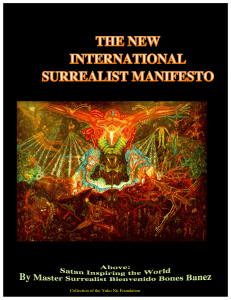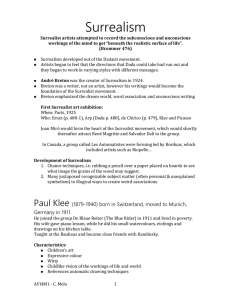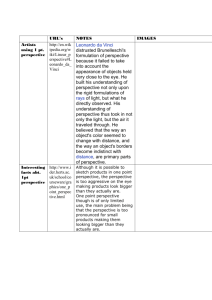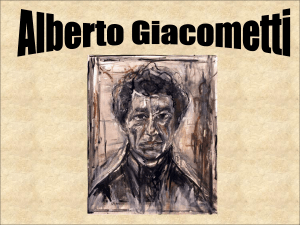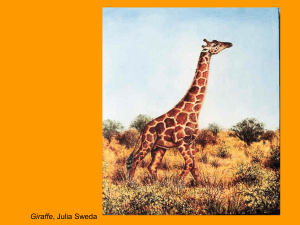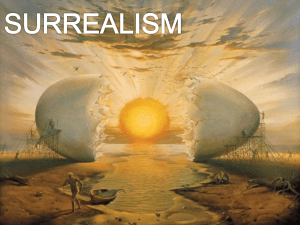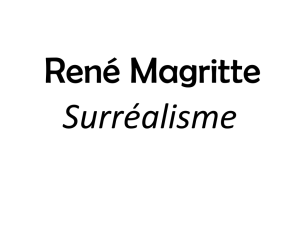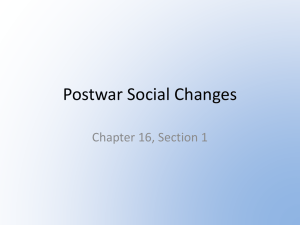Surrealism.
advertisement
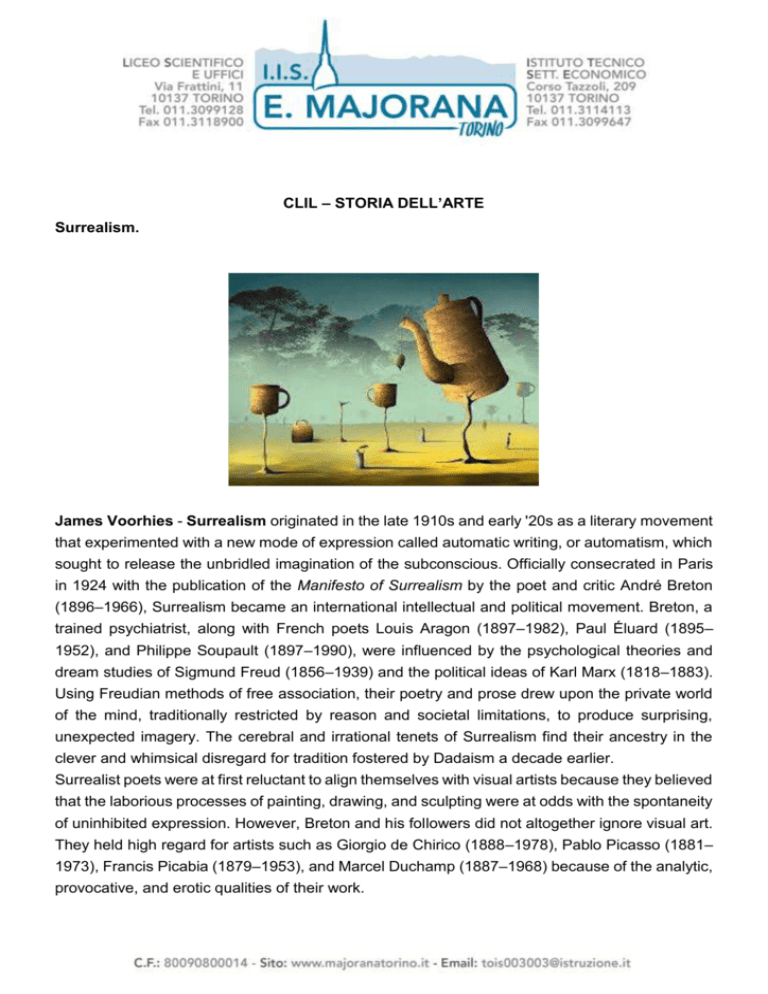
CLIL – STORIA DELL’ARTE Surrealism. James Voorhies - Surrealism originated in the late 1910s and early '20s as a literary movement that experimented with a new mode of expression called automatic writing, or automatism, which sought to release the unbridled imagination of the subconscious. Officially consecrated in Paris in 1924 with the publication of the Manifesto of Surrealism by the poet and critic André Breton (1896–1966), Surrealism became an international intellectual and political movement. Breton, a trained psychiatrist, along with French poets Louis Aragon (1897–1982), Paul Éluard (1895– 1952), and Philippe Soupault (1897–1990), were influenced by the psychological theories and dream studies of Sigmund Freud (1856–1939) and the political ideas of Karl Marx (1818–1883). Using Freudian methods of free association, their poetry and prose drew upon the private world of the mind, traditionally restricted by reason and societal limitations, to produce surprising, unexpected imagery. The cerebral and irrational tenets of Surrealism find their ancestry in the clever and whimsical disregard for tradition fostered by Dadaism a decade earlier. Surrealist poets were at first reluctant to align themselves with visual artists because they believed that the laborious processes of painting, drawing, and sculpting were at odds with the spontaneity of uninhibited expression. However, Breton and his followers did not altogether ignore visual art. They held high regard for artists such as Giorgio de Chirico (1888–1978), Pablo Picasso (1881– 1973), Francis Picabia (1879–1953), and Marcel Duchamp (1887–1968) because of the analytic, provocative, and erotic qualities of their work. The visual artists who first worked with Surrealist techniques and imagery were the German Max Ernst (1891–1976), the Frenchman André Masson (1896–1987), the Spaniard Joan Miró (1893– 1983), and the American Man Ray (1890–1976). About 1937, Ernst, a former Dadaist, began to experiment with two unpredictable processes called decalcomania and grattage. Decalcomania is the technique of pressing a sheet of paper onto a painted surface and peeling it off again, while grattage is the process of scraping pigment across a canvas that is laid on top of a textured surface. In 1927, the Belgian artist René Magritte (1898–1967) moved from Brussels to Paris and became a leading figure in the visual Surrealist movement. Influenced by de Chirico's paintings between 1910 and 1920, Magritte painted erotically explicit objects juxtaposed in dreamlike surroundings. His work defined a split between the visual automatism fostered by Masson and Miró (and originally with words by Breton) and a new form of illusionistic Surrealism practiced by the Spaniard Salvador Dalí (1904–1989), the Belgian Paul Delvaux (1897–1994), and the FrenchAmerican Yves Tanguy (1900–1955). In 1929, Dalí moved from Spain to Paris and made his first Surrealist paintings. He expanded on Magritte's dream imagery with his own erotically charged, hallucinatory visions. The organized Surrealist movement in Europe dissolved with the onset of World War II. Breton, Dalí, Ernst, Masson, and others, including the Chilean artist Matta (1911–2002), who first joined the Surrealists in 1937, left Europe for New York. The movement found renewal in the United States at Peggy Guggenheim's (1898–1979) gallery, Art of This Century, and the Julien Levy Gallery. (fonte: www.orizzontescuola.com - clilspagnolo.blogspot.it)

